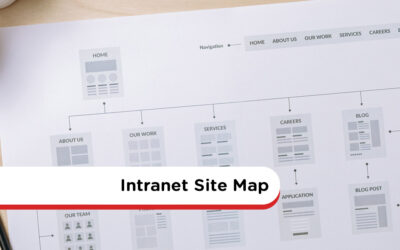Intranet Design Services
Choose from the self-build option with our support or work with one of our designers who will create a customized, fully-functioning intranet for your business, in 40 days or less, guaranteed!
The Challenge: Lack Of Time
You’ve defined your requirements and you know MyHub can deliver the outcomes you’re looking for. But do you lack the time and resources to customize your MyHub intranet site and get it launched on time?
The Solution: We Do It For You
By engaging with one of our designers, we’ll remove all of the complexity and risk by doing it all for you.
Planning For Success
Your MyHub intranet designer will lead the engagement process and ensure you’re updated on progress. The process is broken down into three key stages including:

Scope & Commercials
- Gathering requirements
- Defining launch objectives and timelines
- Developing a site plan including key pages, modules and content
- Agreeing the scope of works, pricing and terms.

Site Design
- Adding a company logo and changing site color options
- Designing and adding pages
- Adding content to pages including images, news articles, text, video and forms
- Adding folders and files to the Document Exchange
- Adding users to the site, Role Groups and Roles

Launch
- Handover and training
- Post-launch support
- Free site audit at any time
MyHub Designers, Delivering Great Outcomes
Intranet Design Articles
Knowledge Transfer Template: Retain Company Knowledge
A knowledge transfer template offers a structured, repeatable method for capturing an employee’s vital skills, expertise, and workflows—critical when someone retires, transfers roles, or leaves the organization. Designed to reduce reliance on individual memory, such templates help safeguard institutional knowledge and ensure smoother transitions across roles and teams.
The template outlines key informational fields: the skill or task name, objectives & responsibilities, deliverables, meetings, contacts, compliance requirements, budget details, risks, and lessons learned. It facilitates various transfer methods like mentoring, shadowing, job aids, videos, or how‑to documents—tailored to different learning styles and business needs.
Effective knowledge transfer follows a clear six-step process: identify critical knowledge, collect it using the standardized checklist, share it via appropriate formats, review and update regularly, support application on the job, and preserve it as new knowledge emerges. Embedding it into intranet systems streamlines updates, centralizes access, and reinforces long-term operational resilience.
Intranet Site Map – Template & Tools
A well-designed intranet site map provides a visual blueprint of the intranet’s structure—clarifying how pages and tools connect. It streamlines navigation, highlights content overlap, and gives teams a clear framework for creating intuitive pathways throughout the digital workspace .
Developing your intranet architecture should involve cross‑department collaboration. Workshops with a steering group help establish logical content groupings—often using top-down (business categories) or bottom-up (task/user-based) approaches—to define parent and child page hierarchies. A tool like Gloomaps can simplify visual planning and capture stakeholder feedback effectively
Best practices include limiting top-level navigation to fewer than ten clear categories, avoiding ambiguous labels like “Other”, and keeping names simple yet descriptive. Testing the proposed structure with real user tasks helps validate usability. As needs evolve, the site map should stay flexible, updated, and aligned with organizational changes .
Internal Communication Strategy: 15 Effective Tips
Crafting an effective internal communication strategy is no small task—but it’s absolutely critical in today’s hybrid and remote-first businesses. A successful plan connects employees to your mission and boosts engagement, productivity, and retention, rather than leaving staff disconnected from leadership and purpose.
A complete strategy goes beyond just broadcasting news. It accounts for all communication flows—top-down from leadership, bottom-up feedback, lateral peer-to-peer interactions, and crisis or change communications. It also leverages diverse media: written posts, visual content, meetings, voice calls, and digital channels—each contributing to clarity and trust across teams.
Building the strategy begins by auditing current communication practices and capturing employee feedback, then setting clear SMART objectives tied to business outcomes. From there, you implement a phased action plan: forming a cross-functional team, segmenting audiences, choosing the right channels, creating a cadence, planning informal social spaces, and distributing the strategy widely. Rigorous measurement and frequent reviews help you refine the plan into a living, strategic asset.
Intranet Definition: What Is An Intranet?
A modern intranet is essentially a secure, private internal website designed exclusively for employees or select partners. Historically used for basic document sharing, intranets have evolved into comprehensive digital workplaces that support collaboration, communication, and employee self-service. They empower distributed teams—on-site, hybrid, or remote—to work effectively from anywhere, on any device.
Today’s intranets serve multiple strategic roles: as a central hub for critical company information and policies; as a communications channel via news feeds, blogs, forums, and surveys; as a collaboration engine featuring shared project spaces, directories, instant messaging, and task tools; and as a knowledge manager that preserves institutional know-how through shared documents, discussion threads, and searchable content. Social features and employee profiles further reinforce culture and connection across dispersed teams.
When it comes to deployment, organizations typically choose between a do‑it‑yourself solution (built with WordPress, SharePoint, or similar) or a cloud-hosted, SaaS platform. While DIY systems offer flexibility, they often require heavy maintenance, inconsistent usability, and extra plugins. In contrast, modern intranet services deliver tried-and-tested templates, mobile-friendly design, role-based permissions, and integration with enterprise apps—all of which drive faster user adoption, reduce IT burden, and make the intranet a real everyday workplace tool.
7 Jotform Alternatives To Consider
Jotform has long been a go‑to online form builder for many businesses, offering a drag-and-drop interface, conditional logic, e-signatures, and thousands of templates. However, common complaints include slow loading times, an outdated editor, and overwhelming template choices—pushing many organizations to explore alternatives.
To help decision-makers, MyHub lists seven compelling Jotform alternatives: forms.app, Zoho Forms, Google Forms, Microsoft Forms, ProProfs Survey Maker, SurveyMonkey, and its own intranet-powered form builder. Each option varies in ease-of-use, feature set, pricing, analytics, and integrations, making it easier to align tool choice with organizational needs and budgets.
MyHub’s form builder stands out by combining intuitive drag-and-drop form design with workflow automation—notifications, approval routing, conditional fields, and role-based permissions—all included at no extra cost within its intranet platform. With built-in integrations to Microsoft 365 and Google Workspace, mobile accessibility, and support tools, it offers a more holistic form solution suited for internal processes.
How To Motivate Employees: 12 Effective Ways
Employee motivation isn’t just about compensation—it’s about engaging the heart and mind. MyHub’s guide lays out four core drivers—recognition, responsibility, advancement, and rewards—which, when embedded in simple workplace strategies, lead to measurable boosts in morale and performance. Notably, 67% of employees cite praise from managers as more motivating than a pay raise.
One practical strategy is recognition. Public acknowledgment—via shout-outs, peer-nominated awards, or spot bonuses—costs little but delivers high impact. Highlighting achievements on the company intranet, newsletters, or team meetings reinforces a culture of gratitude and helps employees feel valued.
Another key approach is empowering employees with responsibility and autonomy. When staff have control over their tasks and decision-making, they become more engaged and committed. Coupled with visible opportunities for professional growth—through training, mentoring or advancement—it helps them see a future with the organisation. A modern intranet can support this by hosting learning modules, skill quizzes, and forums to share expertise.







